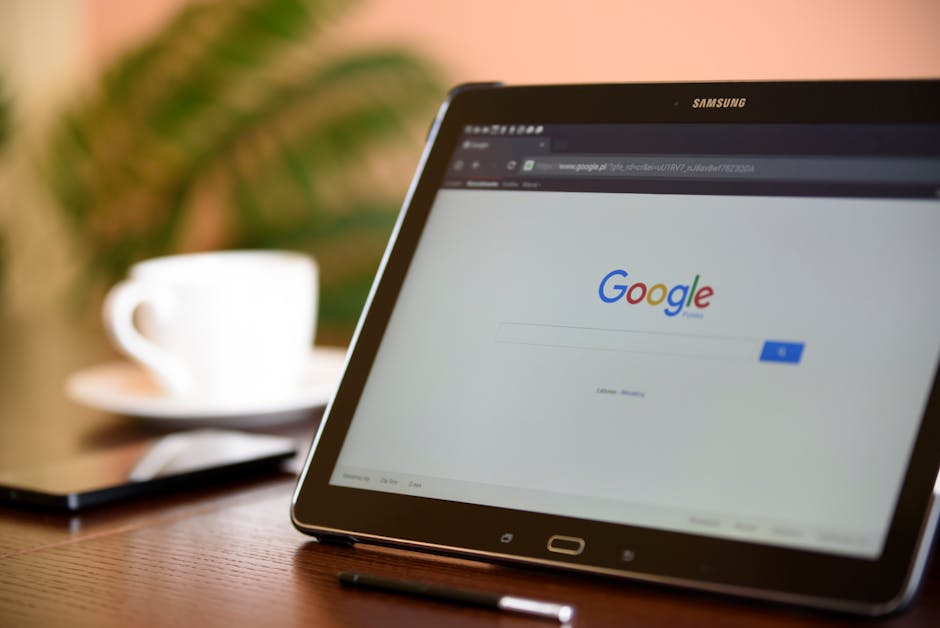So, you’re thinking about Google Ads for 2025. And the first thing on your mind, probably the only thing, is how much is this going to drain from my bank account. It’s the big question isn’t it.
Everyone wants a simple number. A neat little price tag they can look at and say “okay I can do that” or “nope, too rich for my blood.” But with Google Ads it’s just not like that.
The truth is, asking how much Google Ads costs is a bit like asking how much a car costs. Are you buying a beat-up 2003 sedan or a brand new luxury SUV? The answer is always going to be, well, it depends on a bunch of stuff.
And that’s what we’re going to get into. Not a bunch of corporate speak but the real factors that will actually decide how much you’re going to spend. It’s a bit of a maze but you can get through it.
The Big Factors That Mess With Your Google Ads Budget
The price you pay for Google Ads isn’t some number Google just pulls out of thin air. It’s more like a giant, super-fast auction that’s happening all the time, for every single search.
The Keyword Auction Thing
Every time someone searches, an auction starts. You’re bidding against other businesses for that person’s attention. It is this bidding war that really sets the base price.
If you’re a lawyer in a big city, lots of other lawyers want that top spot. So the price for a click on “personal injury attorney” is going to be super high. It’s just how it is.
But if you sell something more specific like “handmade wooden spoons for left-handers,” the competition is probably way lower. That means your clicks will be a lot cheaper.
Your Ad’s Report Card: Quality Score
Google actually gives your ads a grade, called a Quality Score. It’s a number from 1 to 10. A higher score is better, obviously.
This score is based on a few things. How likely people are to click your ad. How much your ad actually relates to what the person searched for. And what your website is like after they click.
A good Quality Score is considered to be a reward from Google. They’ll give you a discount on your clicks. A bad score? Well, you might have to pay more just to show up.
Where You Are and What You Sell
Your location and your industry are huge. Advertising in New York City is naturally more expensive than in a small town in Wyoming. There are just more people and more businesses fighting for space.
And some industries are just plain pricey. Things like insurance, loans, and legal services. These fields normally have clicks that can cost $50 or even more. It’s because one new customer can be worth thousands of dollars.
So, How Much Are We Actually Talking in 2025?
Okay, enough with the “it depends” stuff. You want some numbers, even if they’re just ballpark estimates. So here are some general figures you might see floating around in 2025.
Most businesses that are just starting out might spend anywhere from $1,000 to $10,000 a month. It’s a big range, I know. But it gives you a starting point for your own thinking.
A lot of the cost comes down to how you choose to pay. There are a few main ways this all works and they each have their own sort of average price.
What’s a Normal Click Cost? (CPC)
Cost-Per-Click, or CPC, is the most common way to pay. You only get charged when someone actually clicks on your ad. This is generally what people think of with Google Ads.
Across all different kinds of businesses, the average CPC tends to hover around $2 to $4. But this is a very wide average.
Some keywords might only cost you $0.50 a click. Others, especially in those competitive areas we talked about, could be upwards of $60 for a single click. It’s a wild spread.
Paying Just to Be Seen (CPM)
Sometimes you don’t care about clicks. You just want people to see your brand name. This is where Cost-Per-Mille, or CPM, comes in. You pay for every thousand times your ad is shown.
This is normally cheaper on a per-interaction basis. You might pay a few dollars for a thousand views. It’s mostly used for brand awareness campaigns on the Display Network not so much search.
Getting People to Actually Do Something (CPA)
Then there’s Cost-Per-Action, or CPA. This is where you tell Google you’re willing to pay a certain amount for a specific result, like a sale or a form fill-out.
Google then uses its magic to try and get you those results at your target price. The average CPA can be all over the place, maybe $50 to $100 depending on what you’re selling.
Don’t Forget the “Hidden” Costs of Running Ads
The money you give directly to Google isn’t the only cost. There are other things to think about that can add up and you should probably be aware of them.
First, there’s management. Are you going to run these campaigns yourself? It takes a lot of time to learn and do it right. Time is money, as they say.
Or are you going to hire a freelancer or an agency? That’s a direct cost. They might charge a flat fee every month, or a percentage of what you spend on ads. This can be hundreds or thousands of dollars.
Then you have tools. You might want special software to help you find keywords or track your competition. These tools aren’t usually free and can add another monthly expense to your budget.
How to Not Go Broke with Google Ads
You don’t have to just throw money at Google and hope for the best. There are smart ways to control your spending and make your budget go further. It just takes a little work.
Start Small: Don’t go all in on day one. Set a small daily budget you’re comfortable with. You can always increase it later once you see what’s working.
Go for Long-Tail Keywords: Instead of bidding on a super expensive, general term like “shoes,” try something more specific like “men’s waterproof running shoes size 11.” It’s cheaper and the person searching is more likely to buy.
Use Negative Keywords: This is a big one. You can tell Google which words you don’t want your ads to show up for. If you sell high-end furniture, you might add “free” and “cheap” as negative keywords. This stops wasted clicks.
Make Your Landing Page Awesome: Your website page where people land after they click is so important. Make sure it’s fast, easy to use, and clearly matches what your ad promised. This helps your Quality Score a lot.
Your Google Ads Cost Questions, Answered
How much should I budget for Google Ads to start?
A good starting point for a small business is typically around $500 to $1,500 per month. This gives you enough data to see what works without breaking the bank right away.
Can I actually use Google Ads for $5 a day?
Technically, yes, you can set a budget that low. But will it get you any real results? Probably not. You might get a couple of clicks a day, which isn’t enough to learn anything or get customers.
Why are my Google Ads so expensive all of a sudden?
This can happen for a few reasons. A new competitor might have entered the auction and is bidding aggressively. It could be a seasonal trend (like “Christmas gifts” in December). Or, your Quality Score might have dropped.
Is Google Ads more expensive than Facebook Ads?
Generally, clicks on Google Search are more expensive than clicks on Facebook. That’s because on Google, people are actively searching for a solution, so their intent to buy is higher. You pay a premium for that intent.
Does the cost change during different times of the year?
Absolutely. For a business that sells pool supplies, costs will go way up in the summer and be very low in the winter. Nearly every industry has some kind of seasonality that affects competition and prices.
Key Takeaways
There’s no single price for Google Ads. Your cost is unique to your business, industry, and location.
The main things affecting your price are keyword competition, your ad’s Quality Score, and your industry.
A “typical” cost-per-click is a few dollars, but it can range from under a dollar to over $50.
Don’t forget to account for other costs like management fees or the time it takes you to run the campaigns.
You can control your spending by starting with a small budget, using specific long-tail keywords, and improving your website’s landing pages.










